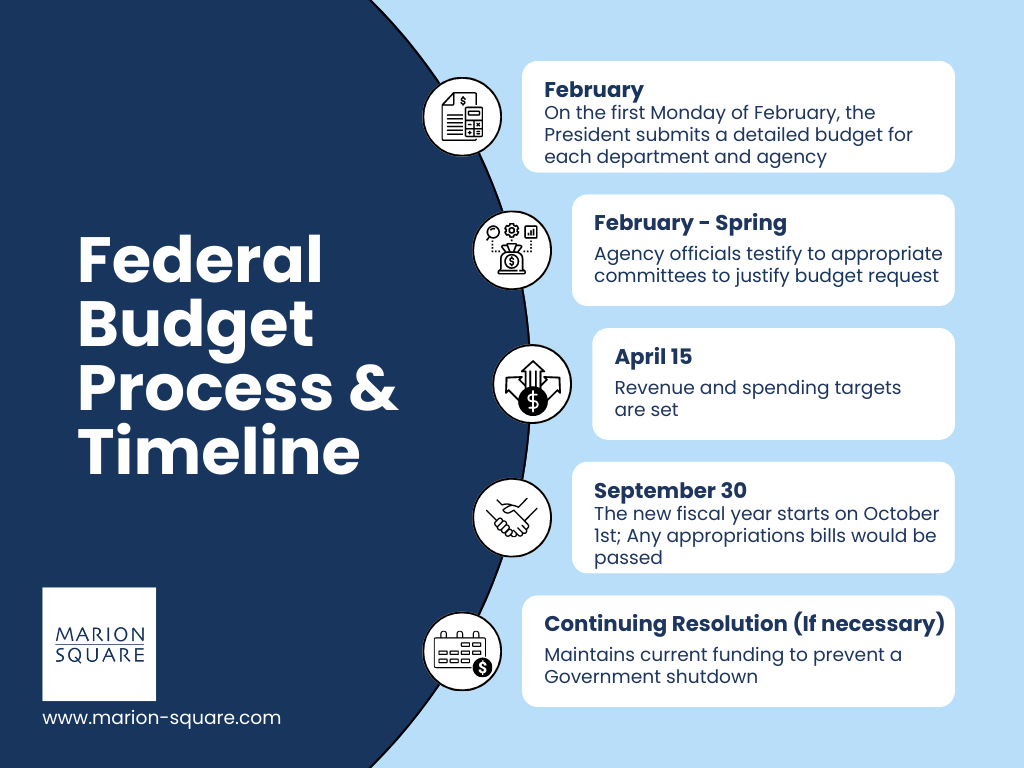The Federal Budget Process
Working with clients we often times hear, "opportunities in our sales pipeline never seem to close". At Marion Square, we categorize Government sales opportunities along a spectrum. On one end of the spectrum are opportunities with an identified budget line item and a clear mandate to make a purchase, similar to the Government’s current Zero Trust Architecture (ZTA) mandate which agencies are budgeting for today. On the other end of the spectrum, you have sales opportunities that can best be described by the Government’s comments " we like your technology, it solves a problem, we really need it", but there is currently no line item budget or mandate for this technology.
Looking at our customers sales pipelines, the overwhelming majority of opportunities that never seem to close fall in the later category of "we like your technology, it solves a problem, we really need it". A major contributing factor to this can be traced directly to the Government’s budgeting and procurement process. Unlike commercial organizations who have greater flexibility to move money from various programs, the Government follows a more rigid and extensive budgeting and acquisition process. Government regulations such as agencies can’t release an RFP unless the funding for the program is available, or the fact that programs are highly incented to spend all of their allocated project budget - returning funding is not an ideal scenario - leaves very little funding that is unaccounted for in an agencies budget to be used on projects or technologies that come up during a fiscal year.
At a high level the Federal budget process begins in the Spring of each year with agencies planning their budgets and submitting their initial requests to OMB in the early Fall. In early February the President submits a budget request to Congress with the Senate and the House reviewing and negotiating the budget request through the spring and summer and finally passing the budget on or around mid-September (Great article with more detail on the budget process: The Federal Budget Timeline & Process | FiscalNote).
Keep in mind though the budget has been passed on time a total of 4 times in the last 40 years, with FY2004 being the last time (The Congressional Budget Process Timeline), so it’s very common for a continuing resolution (CR) to take place at the beginning of a fiscal year. Learn more on CR’s from our September blog post: What is a Continuing Resolution (CR), and How Does it Impact Your Sales Strategy for the Upcoming Year?
Understanding the Government's budget process highlights the importance of knowing which programs are funded and focusing on those programs from a sales go to market perspective, especially if you are forecasting revenue from a specific opportunity in a giving Government fiscal year. Sales teams need to ask and understand if the program is budgeted to truly feel confident in forecasting an opportunity.


